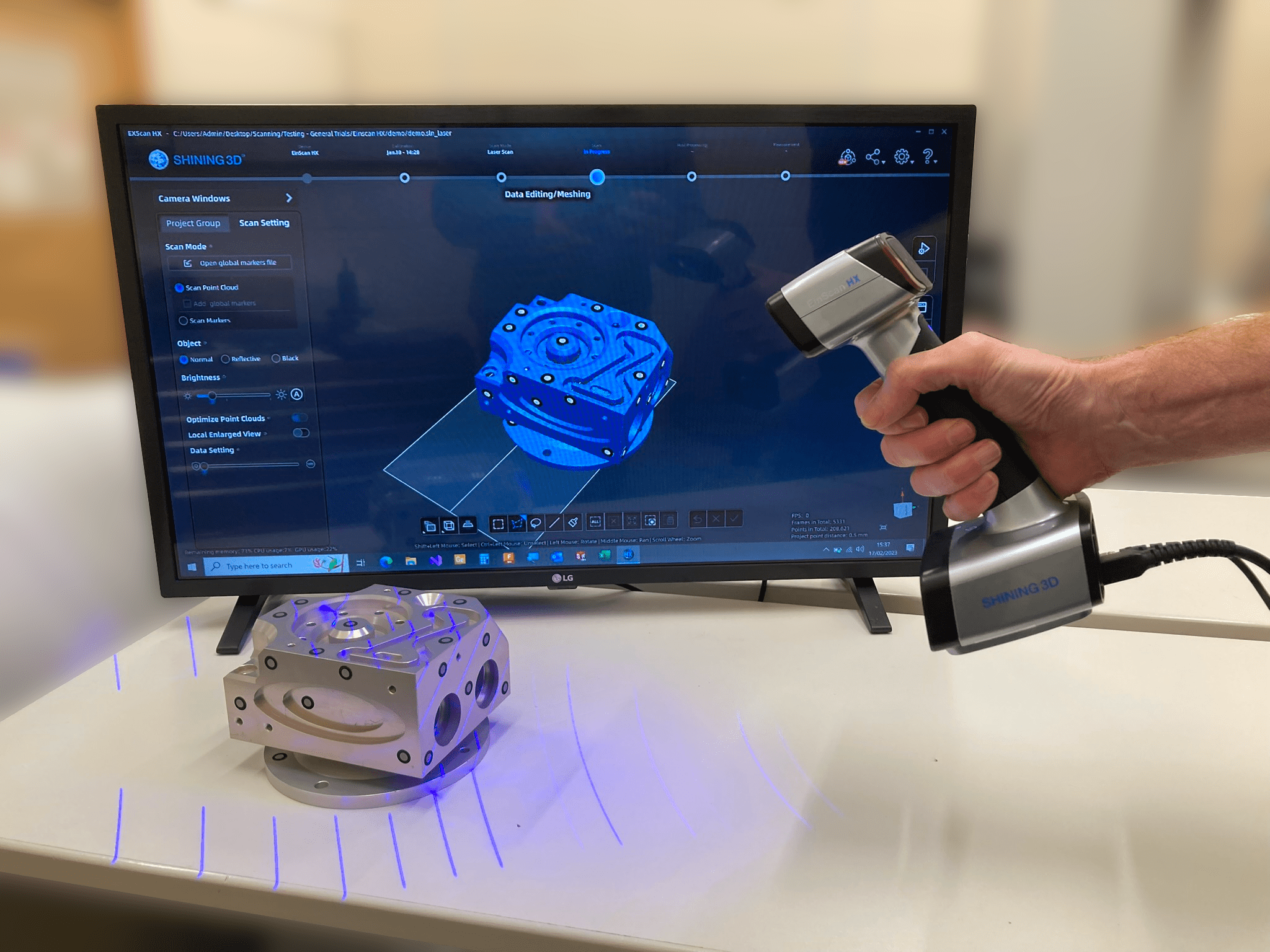
3D Scan To STL Mesh
Our 3D Scan To STL Services
Looking for a way to create a digital replica of your physical object? Look no further than our 3D Scan to STL service. We can help you turn real-world objects into 3D digital models (meshes) that can be used for a wide range of applications, from 3D printing to CAD modelling or digital marketing.
Want to see examples of our work?
Check out our 3D scanning portfolio to see examples of STL models we’ve scanned.
How can I get my part scanned to STL?


The process is simple: send us a brief description and a few photos of the item you’d like scanning to STL, and we’ll assess your requirements. We will then determine the best scanning method to create your 3D mesh and provide you with a personalised quote. If you’re happy, you can either send your part to us, or if your parts are particularly large or valuable we can visit your site to scan your parts.
Why use our Scan to STL service?
Our Scan to STL service is incredibly accurate, thanks to our state-of-the-art scanning technology and experienced engineers. This means that you can be sure that your digital models are an exact representation of the physical object. There are countless applications for the STL meshes we provide. For example, you can use them to create prototypes, moulds, and production parts. They can also be used for product visualisation, marketing, and more.
Check out our reviews
We are committed to providing our customers with a high quality service. Check our our Google reviews to see what our customers say about our customer service, attention to detail, and timely delivery.
Frequently Asked Questions
Can you scan my part to STL?
Yes. With our combination of structured light and laser scanners there’s very little we can’t scan. We have scanned everything from complex industrial assemblies to hobbyist model cars. Check out our Case Studies and 3D Scanning Portfolio pages for more examples of our work.
Can you scan shiny / matt / transparent surfaces?
Yes. For parts that would otherwise be difficult to scan, we use a specialist self evaporating spray that leaves zero residue. It enables us to scan almost any material and surface finish, whilst also requiring no cleaning!
What file formats do you use for 3D scanning?
The most common file formats for outputting 3D scan data to mesh are STL, OBJ, and PLY, though other file formats are available. See our downloads page for example data.
How long does it take to scan to STL mesh?
The scanning process can vary depending on the complexity and size of the object. In general, a small object can be scanned in an hour, while a larger object may take a full day. As well as the scanning time, there may also be some post processing time to account for. As part of your personalised quote we will provide you with an estimated lead-time.
How much does it cost to scan a part to STL?
The cost of our 3D scanning to STL service can vary depending on a variety of factors, including the size and complexity of the object, and the desired level of accuracy.
To receive a personalised quote for your project, please send us a brief description and a few photos of the object you’d like to scan using our contact form or email us at enquiries@ab-technology.co.uk
Our prices include all costs associated with the project, including scanning, processing, and file delivery. There are no hidden fees.
If you’re interested in our 3D Scan to STL service, please don’t hesitate to contact us today.
We’re ready to help you turn your real-world objects into high-quality digital models.
or read more about our other 3D scanning services.
About Us
AB Technology started out as an independent CMM Inspection & Programming company based near Nottingham, UK. Over the last 30 years, we have expanded our services to include 3D scanning and reverse engineering, serving customers of all sizes, across an array of industry sectors, both domestically and internationally.
Key Links
Contact Us


AB Technology (Newark) Ltd.
Unit 8, Crewe Close
Blidworth
Nottinghamshire
NG21 0TA
United Kingdom


